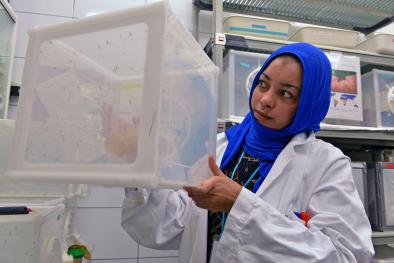Science Source
Possible Association Between Zika Virus Infection and Microcephaly — Brazil, 2015
- Investigates the possible association of microcephaly with Zika virus infection during pregnancy and presents a registry for incident microcephaly cases (head circumference ≥2 standard deviations [SD] below the mean for sex and gestational age at birth) and pregnancy outcomes among women suspected to have had Zika virus infection during pregnancy
- Finds that among a cohort of 35 infants with microcephaly born during August–October 2015 in eight of Brazil’s 26 states and reported to the registry, the mothers of all 35 had lived in or visited Zika virus-affected areas during pregnancy, 25 (71%) infants had severe microcephaly (head circumference >3 SD below the mean for sex and gestational age), 17 (49%) had at least one neurologic abnormality, and among 27 infants who had neuroimaging studies, all had abnormalities
- States that further studies are needed to confirm the association of microcephaly with Zika virus infection during pregnancy and to understand any other adverse pregnancy outcomes associated with Zika virus infection
Related Content
Science Source
| The Lancet
El Niño and climate change—contributing factors in the dispersal of Zika virus in the Americas? - The Lancet
Shlomit Paz, Jan C Semenza
Science Source
| Proceedings of the National Academy of Sciences
Global risk model for vector-borne transmission of Zika virus reveals the role of El Niño 2015
Cyril Caminade, Joanne Turner, Soeren Metelmann et al
Headline

Apr 7, 2017 | Carbon Brief
Zika outbreak ‘fuelled by’ El Niño and climate change
Science Source
| MMWR. Morbidity and Mortality Weekly Report
Vital Signs: Update on Zika Virus–Associated Birth Defects and Evaluation of All U.S. Infants with Congenital Zika Virus Exposure — U.S. Zika Pregnancy Registry, 2016
Megan R. Reynolds, MPH; Abbey M. Jones, MPH; Emily E. Petersen et al


